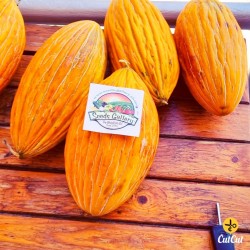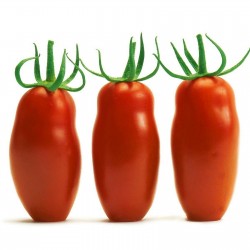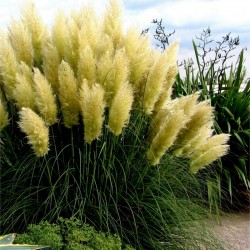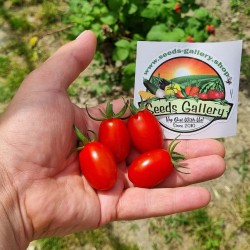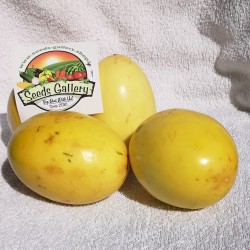Seeds Gallery Com,
5/
5
<h2><span style="font-size:14pt;"><strong>He shou wu, Fo-Ti Frön (Polygonum multiflorum)</strong></span></h2>
<h2><span style="font-size:14pt;color:#ff0000;"><strong>Pris för Paket med 5 frön.</strong></span></h2>
<p>De torkade rötterna från He Shou Wu minskar blodtrycket och blodsockernivån när de tas som en tinktur</p>
<p>Han Shou Wu eller Fo-tieng (Polygonum multiflorum, även Fallopia multiflora) är också känd som Blommande Knotweed. Det är en flerårig vinstock som växer till tio meter lång, med röda kvistar, ljusgröna löv och vita eller rosa blommor. Han Shou Wu är infödd i centrala och södra Kina. Tonicen av växten smakar bittersweet. Speciellt rötterna har en toning effekt. Han Shou Wu anses i Kina som den anti-aging ört par excellence. Det är föreskrivet för tidig gräning av håret och tas av många personer i tablettform. Det har också visat sig att polygonum multiflorum sänker kolesterol och blodsockernivåer. Vidare har toniken en blodrenande funktion. Du kan koka rötterna enligt samma recept som Tulsi och sedan dricka över flera dagar eller dricka en tesked två gånger om dagen med tinktur.</p>
<p><em>Polygonum multiflorum</em> (Fo-ti) is a popular herb in traditional Chinese medicine. Commonly known as He shou wu in China and Fo-ti in North America, studies have shown this herb to be beneficial in the treatment of cancer, diabetes, hair loss, hardening of the arteries, and neurodegenerative diseases.</p>
<p><strong>What is Fo-Ti?</strong></p>
<p><em>Polygonum multiflorum</em> Thunb. (<em>P. multiflorum</em>) or <em>Fallopia maltiflora</em> is officially listed in the Chinese Pharmacopoeia and is one of the most popular herbs in Chinese medicines [R].</p>
<p>In North America, it is commonly known as Fo-ti.</p>
<p>It is widely cultivated throughout China and other countries such as Japan, where it grows in valley shrubs, hillside forests, gutter rock crevices and other locations at altitudes of 200-3000 m [R].</p>
<p>The plant grows to be 2-4 m tall consisting of a woody tuber, leaves that are 3-7 cm long and arrowhead-shaped, white or greenish-white flowers that are 6-7 mm in diameter and an achene fruit 2.5-3 mm in length [R].</p>
<p>Over the years, parts of Fo-ti have been used for different medicinal purposes.</p>
<p>The leaves, root tuber, and rhizomes have been used as a tonic in the anti-aging formula while the stem has been used to alleviate insomnia and to help treat diabetes [R].</p>
<p><strong>Chemical Constituents of Fo-ti</strong></p>
<p>More than 100 chemical compounds have been isolated from Fo-ti, and the most biologically relevant components have been determined to be from the families of stilbenes, quinones, flavonoids, and phospholipids.</p>
<p>Processing Fo-ti, as opposed to using the raw herb, influences the amount and type of chemical constituents found in the plant [R, R].</p>
<p>The toxicity of processed Fo-ti is lower than that of the crude herb and this may be associated with the decreased levels of some of the components after processing [R].</p>
<p>Additionally, processing of Fo-ti resulted in the formation of five new chemicals that were not identified in the crude herb [R].</p>
<p>Refer to the technical section for the full names of these new chemicals and for an extensive list of the chemical constituents of Fo-ti view the article by Lin <em>et al.</em> (2015) [R].</p>
<p>Two of the best-studied constituents of Fo-ti include 2,3,5,40-tetrahydroxystilbene-2-O-β-D-glucoside (TSG) and emodin.</p>
<p><strong>Pharmacokinetics of Fo-ti</strong></p>
<p>Only limited data about certain constituents of Fo-ti is available.</p>
<p>Rats rapidly absorb TSG into its bodily fluid and quickly eliminated, distributing through the liver and lung but hardly through the blood-brain and blood-testicle barriers [R].</p>
<p>Emodin is found primarily in the liver and brain [R].</p>
<p><strong>Health Benefits of Fo-ti</strong></p>
<p>Fo-ti exhibits a wide spectrum of pharmacological effects, including anti-aging, immunologic, neuroprotective, anticancer and anti-inflammatory effects.</p>
<p>However, few clinical studies have been conducted to evaluate the traditional therapeutic claims and to understand the medical potential of its bioactive compounds.</p>
<p><strong>Immune-Supporting Effects of Fo-ti</strong></p>
<p><strong>1) Anti-inflammatory Effects of Fo-ti</strong></p>
<p>TSG and emodin in Fo-ti can decrease inflammation and help with colitis in mouse models by increasing PPAR-gamma and decreasing NF-kB [R, R, R].</p>
<p>In mice, A methanol extract of Fo-ti has an anti-inflammatory effect on mouse macrophage cells that are stimulated by lipopolysaccharide (a bacterial toxin from harmful bacteria).</p>
<p>This Fo-ti extract inhibited NF-kB activation and thus reduced nitric oxide, COX-2 enzyme, and inflammatory cytokines like TNF-alpha and IL-6 [R].</p>
<p>Emodin protects microglia cells in the brain from inflammation due to lipopolysaccharides through AMPK/Nrf2 activation [R].</p>
<p><strong>2) Fo-ti Promotes Good Immune Function</strong></p>
<p>The sugars (rhamnose, arabinose, xylose, and glucose) and anthraquinone glycosides found within Fo-ti can improve immune response and overall immune system function (immunomodulatory effect).</p>
<p>Fo-ti boosts the immune system by increasing the production of T and B cells, and improving the activities of the immune cells, as well as increasing the secretion of the inflammatory tumor necrosis factor.</p>
<p>Further, Fo-ti increases the activity of natural killer (NK) cells [R, R].</p>
<p><strong>3) Fo-ti May be Effective against MRSA</strong></p>
<p>Fo-ti has anti-bacterial activity against methicillin-resistant <em>Staphylocuccus aureus</em> (MRSA) in a cell-based study [R].</p>
<p><strong>4) Fo-ti has Antiviral activities</strong></p>
<p>Fo-ti exhibited anti-HIV by preventing the virus from entering lymphocytes in a cell-based study [R].</p>
<p>Emodin blocks binding of SARS coronavirus human cells in a cell-based study [R].</p>
<p><strong>5) Fo-ti May Help with Asthma</strong></p>
<p>In a mouse model of asthma, Fo-ti decreases airway allergic symptoms [R].</p>
<p><strong>Antioxidant Activities of Fo-ti</strong></p>
<p><strong>6) Fo-ti Protects the Liver</strong></p>
<p>The anthraquinones and polysaccharides found in Fo-ti<em> </em>protect the liver by reducing inflammation, preventing fat oxidation, and increasing antioxidant effects [R, R].</p>
<p>Pre-treating rats with 200 mg/kg water extract of Fo-ti protect the rats against chloroform-induced liver toxicity and significantly reduced plasma ALT (a liver enzyme that indicates liver damage) as well as improved glutathione levels and other oxidative stress markers. However, increasing the dose to 400 mg/kg did not protect the liver against chloroform toxicity, and at 4000 mg/kg, Fo-ti damaged the liver [R].</p>
<p><strong>7) Fo-ti May Protect the Bone from Oxidative Stress</strong></p>
<p>TSG from Fo-ti extract protects the bone-making cells (osteoblasts) from oxidative damage in a cell-based study, suggesting that TSG may protect against osteoporosis due to oxidative stress [R].</p>
<p>Hot water extract of Fo-ti prevents bone loss (osteopenia) from mice with that lose bone mass from having their ovaries removed [R].</p>
<p><strong>8) Fo-ti Protects Tissues Oxidation in Diabetes</strong></p>
<p>2,3,5,4′-Tetrahydroxystilbene-2-O-β-d-glucoside protects against kidney damage from high blood sugar in diabetic mice through SIRT1 and TGF-beta1 pathways [R, R].</p>
<p>Stilbene glucoside from Fo-ti inhibits tissue aging due to high blood sugar (formation of advanced glycation end product) [R].</p>
<p><strong>Neuroprotective effects of Fo-ti</strong></p>
<p><strong>9) Fo-ti May Help with Alzheimer’s Disease</strong></p>
<p>In a mouse model of Alzheimer’s, tetrahydroxystilbene glucoside from Fo-ti helps with memory deficit [R].</p>
<p>A small Chinese clinical trial found that Fo-ti extract is effective against Alzheimer’s disease [R].</p>
<p>Tetrahydroxystilbene glucoside helps slow down age-related memory loss in rats [R].</p>
<p>In a cell-based study, treatment with a Fo-ti root extract reduced amyloid plaque that can cause Alzheimer‘s disease [R].</p>
<p>Emodin, a chemical found in Fo-ti, inhibits the enzyme that breaks down acetylcholine, which might be how it helps with cognitive function in a similar manner to Huperzine A and some Alzheimer‘s drugs [R].</p>
<p><strong>10) Fo-ti May Help with Parkinson’s Disease</strong></p>
<p>In mouse models of Parkinson’s Disease, TSG and an ethanol extract of Fo-ti protects dopaminergic neurons from chemical-induced damage [R, R].</p>
<p><strong>11) Fo-ti Protects the Brain from Stroke</strong></p>
<p>Hexane extracts of Fo-ti can protect against tissue damage following stroke in mice and thus may have clinical applications as a protective agent against neurological injury [R].</p>
<p><strong>12) Fo-ti Protects Against Glutamate-Induced Toxicity</strong></p>
<p>In a cell-based study, Fo-ti protects neuronal cells from the hippocampus against glutamate toxicity, suggesting that it can help with cognitive disorders, especially ones that involve memory loss [R].</p>
<p><strong>Fo-ti and Cardiovascular Risks</strong></p>
<p><strong>13) Fo-ti Helps Reduces Cholesterol</strong></p>
<p>Fo-ti can reduce cholesterol and triglycerides in people with high cholesterol [R, R, R].</p>
<p>However, further research is required to understand how Fo-ti helps reduce cholesterol.</p>
<p><strong>14) Fo-ti Helps Prevent Hardening of the Arteries</strong></p>
<p>TSG<em> </em>can prevent hardening of the arteries by reducing lipid levels in the blood, reduce inflammation and normalize the structure of the blood vessel via a reduction in the expression of MMP-2 and MMP-9 genes [R].</p>
<p><strong>15) Fo-ti has Protective Effects in Blood-Clotting Disorders</strong></p>
<p>Thromboembolic (blood-clotting) disorders are caused by loose blood clots that form in a blood vessel and are carried by the bloodstream into another vessel that subsequently becomes blocked.</p>
<p>This often happens in the lungs (pulmonary embolism), brain (stroke), gastrointestinal tract, kidneys, or leg. This phenomenon is known as thromboembolism.</p>
<p>The chemical 2,3,5,4′-tetrahydroxystilbene-2-O-β-D-glucoside isolated from Fo-ti can prevent abnormal blood clotting [R].</p>
<p><strong>16) Fo-ti<em> </em>Protects the Heart</strong></p>
<p>In rats, TSG protected the heart from squeezing pressure around the abdomen [R].</p>
<p>In a heart attack model, Fo-ti stilbene glycoside can protect against cell injury from lack of oxygen or blood flow by increasing the levels of cellular antioxidants such as superoxide dismutase, glutathione peroxidase, and the nitric oxide pathways [R].</p>
<p><strong>17) Fo-ti Helps with Fructose-Induced Metabolic Syndrome</strong></p>
<p>Fo-ti, together with red ginseng, helps with fructose-induced metabolic syndrome by improving high blood pressure, obesity, high blood lipids, inflammation of the blood vessels, and insulin sensitivity [R].</p>
<p><strong>Other</strong></p>
<p><strong>18) Fo-ti Helps Prevent Cancer</strong></p>
<p>These anthraquinones induce apoptosis (cell death) in cancer cells and activate the PI3K/AKT/mTOR pathways which are abnormal in many human cancers [R, R].</p>
<p>Emodin and aloe-emodin can inhibit cell growth (by inhibiting apoptosis) of human cervical cancer cells, human tongue cancer cells, neuroblastoma cells, and melanoma cells [R].</p>
<p>It could significantly reduce colon tumor volume and weight in mice [R].</p>
<p>Emodin enhanced tumor cell death of gallbladder cancer cells that are injected into mice [R].</p>
<p><strong>19) Fo-ti Helps with Insomnia and Sleep Disorders</strong></p>
<p>Fo-ti extracts are commonly prescribed in Taiwan for the treatment of insomnia [R].</p>
<p>Additionally, although the evidence is insufficient, <em>P. multiflorum</em> may ease the anxiety and insomnia experienced by patients with bipolar disorder [R].</p>
<p><strong>20) Fo-ti Helps With Hair Growth</strong></p>
<p>Fo-ti has traditionally been used to treat patients suffering from baldness and hair loss throughout East Asia.</p>
<p>This traditional use of the herb has been substantiated by a study conducted in mice showing that <em>P. multiflorum</em> extracts promote hair growth by inducing the anagen phase in resting hair follicles [R].</p>
<p>Torachrysone-8-O-β-D-glucoside, a compound found in <em>P. multiflorum</em>, can significantly increase the number of dermal papilla cells which play a role in hair growth and hair fiber length [R].</p>
<p><strong>Potential Side Effects and Toxicity</strong></p>
<p><strong>Liver Toxicity of Fo-ti</strong></p>
<p>The best-known toxicity of <em>P. multiflorum</em> is the induction of hepatotoxicity [R]. Hepatotoxicity induced by <em>P. multiflorum </em>can be severe and even result in death.</p>
<p>Several cases of hepatotoxicity due to <em>P. multiflorum</em> have been reported in patients from Australia, China, Italy, Japan, the Netherlands and Slovakia who were taking the product for hair loss, chronic prostatitis or to boost the immune system [R, R, R, R].</p>
<p>The main chemicals responsible for the hepatotoxicity of <em>P. multiflorum</em> are free anthraquinones such as emodin and physcion [R]. The toxicity of emodin has been detailed by the U.S. National Toxicology Program [R].</p>
<p>The hepatotoxicity of the water extract is higher than that of the ethanol and acetone extracts of <em>P. multiflorum</em>. Processing of <em>P. multiflorum</em> also decreased hepatotoxicity [R, R].</p>
<p><strong>Kidney and Lung Toxicity of Fo-ti</strong></p>
<ol><li><em> multiflorum</em> is also toxic to the kidneys (nephrotoxicity) and the lungs (pulmonary toxicity), particularly after long-term use.</li>
<li><em> multiflorum</em> causes embryonic toxicity in mice and may affect embryonic development, suggesting that it may not be safe for pregnant women.</li>
</ol><p>Warfarin (prescribed to prevent the formation of blood clots) may interact negatively with <em>P. multiflorum </em>resulting in bone marrow suppression [R].</p>
<p><strong>Technical</strong></p>
<ul><li>The underlying mechanisms of <em>P. multiflorum </em>may be related to the antioxidant effects of TSG, a decrease of the angiotensin II level, suppression of transforming growth factor-β1 expression, and inhibition of extracellular signal-regulated kinase 1/2 and p38 mitogen-activated protein kinase activation.</li>
<li>Cardiac remodeling refers to the changes in size, shape, structure, and function of the heart and is usually a pathological result of an injury to the heart muscle.</li>
<li>Several studies have demonstrated that the anti-inflammatory effects of <em>P. multiflorum</em> occur through inhibition of the expression of pro-inflammatory signaling factors such as nuclear factor-κB, tumor necrosis factor-α, inducible nitric oxide synthase, cyclooxygenase-2, chemokines, and cytokines (R, R1).</li>
<li>Additionally, other markers of diabetes, including the expression of TGF-β1, COX-2, and SIRT1 genes, were found to significantly improve in TSG-treated diabetic rats [R].</li>
<li>Full chemical names for the compounds found in <em>P. multiflorum </em>after processing: 2,3-dihydro-3,5-dihydroxy-6-methyl-4(H)-pyran-4-one, hydroxymaltol, 5-hydroxym ethyl-furfural, butanedioic acid, and 5-dihydroxy-6-methyl-4(H)-pyran-4-one</li>
<li>P. multiflorum boosts the immune system by accelerating the production of T and B lymphocytes, initiating the mixed lymphocyte reaction, improving macrophage phagocytosis, and increasing secretion of tumor necrosis factor (TNF).</li>
</ul><p><strong>Other names for <em>P. multiflorum </em>include:</strong></p>
<p>Chinese Cornbind, Chinese Knotweed, Climbing Knotweed, Fallopia multiflora, Flowery Knotweed, Fo Ti Tieng, <strong>Fo-Ti,</strong> He Shou Wu, Ho Shou Wu, Multiflora Preparata, Poligonum, Poligonum Multiflorum, Polygonum,Polygonum Multiflorum Thunberg, Racine de Renouée Multiflore, Radix Polygoni Multiflori, Radix Polygoni Shen Min, Renouée, Renouée à Fleurs Nombreuses, Renouée de Chine, Renouée Multiflore, Reynoutria multiflora (Thunb), Rhizoma Polygonata, Shen Min, Shou Wu, Shou Wu Pian, Tuber Fleeceflower, Zhihe Shou Wu, Zi Shou Wu</p>
MHS 110 (5 S)




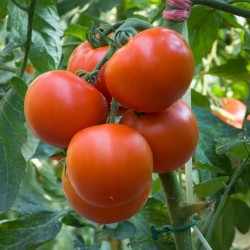

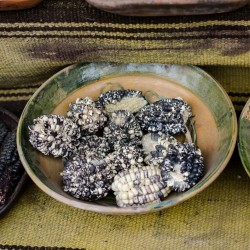


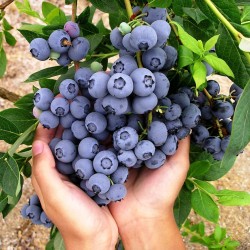
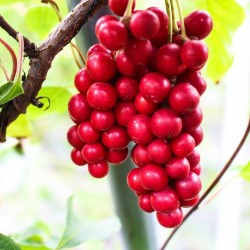
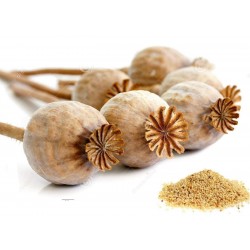
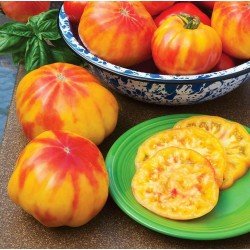
.png)
